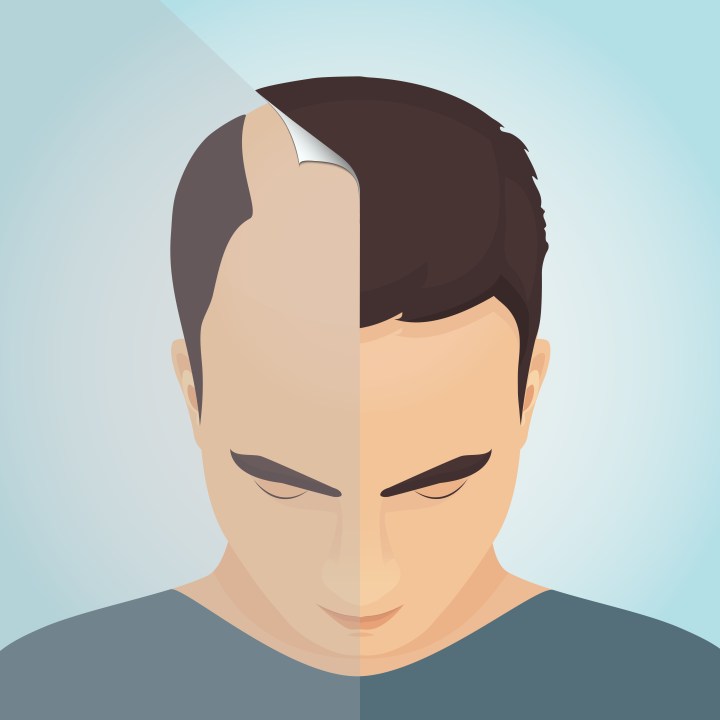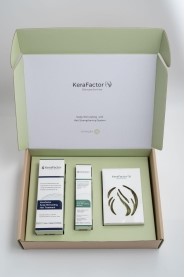Tampa (BLOOM) – Ah, the glory of a full head of hair! It’s not just about looks; it’s a symbol of vitality and confidence. Hair loss prevention is teeming with solutions, both time-tested and remarkably innovative. In this exploration, we’ll unravel the mysteries behind hair loss causes, delve into trusted remedies, explore cutting-edge techniques, and consider the psychological impact.

Understanding Hair Loss Causes
To conquer the enemy, you must understand it. Genetics, has a hand in hair loss. According to the American Academy of Dermatology, genetics play a pivotal role in hair loss. Medical conditions like thyroid disorders and medications such as chemotherapy can wreak havoc on your locks. Lifestyle and environmental factors, from stress to poor nutrition, can also contribute to the battle against your mane.
Tried-and-True Remedies
Let’s start with the basics. Proper hair care isn’t just about aesthetics; it’s foundational for preventing hair loss. Treat your hair gently – harsh treatments and excessive heat can accelerate hair loss. But healthy hair starts from within. Nutritional balance is key – a diet rich in biotin, Vitamin D, Iron, and Omega-3 fatty acids can fortify your follicles. And don’t roll your eyes at traditional remedies; aloe vera, known for its soothing properties, and onion juice, a surprisingly potent elixir, have been passed down generations. And who knew? A relaxing scalp massage and aromatherapy can stimulate blood flow and tame stress.
Innovative Techniques
Now, let’s peek into the future. Low-Level Laser Therapy (LLLT) uses light energy to invigorate hair follicles, resulting in healthier hair growth. Platelet-Rich Plasma (PRP) therapy takes your blood, spins it down, and reintroduces the growth factors to your scalp, jump-starting follicle revival. Mesotherapy, a microinjection technique, delivers a cocktail of nutrients and medications directly to your scalp. And the FDA-approved medications – minoxidil and finasteride – have earned their stripes in battling hair loss, slowing down the retreat and promoting regrowth, according to FDA reports.
Hair Transplants
For those looking for a more direct solution, hair transplants offer a permanent solution. This surgical technique involves moving hair follicles from areas of dense growth (typically the back of the head) to areas of thinning or baldness. It’s an intricate process that requires skill and artistry, but the results can be remarkable, restoring a natural look and boosting confidence.
There are two primary methods of hair transplant:
- Follicular Unit Transplantation (FUT): Commonly known as the “strip” method, a strip of scalp containing healthy hair follicles is removed from the donor area and then dissected into individual grafts for transplantation. This method leaves a linear scar but is known for producing a higher number of grafts.
- Follicular Unit Extraction (FUE): In this method, individual hair follicles are directly extracted from the donor area, leaving tiny, almost imperceptible scars. FUE is favored for its minimally invasive nature and allows for more precise graft placement.
Hair transplants require careful consideration, as they involve both medical and aesthetic aspects. The results, however, can be transformative, providing a natural and permanent solution to hair loss.
Emerging Technologies
Ever heard of 3D-printed hair follicles? Imagine growing hair follicles in a lab and transplanting them seamlessly for a head full of hair. Gene therapy isn’t just for sci-fi novels – it’s being explored to manipulate genes and prevent hair loss at its root. Stem cell research is in full swing, with potential for regenerative hair growth. Nanotechnology steps in with microscopic materials that enhance hair growth at a cellular level.
Personalized Approaches
No two scalps are alike, which is why seeking professional advice is invaluable. Dermatologists and trichologists can tailor a solution to your specific needs. Whether it’s a combination of traditional methods and innovative techniques, they’ll guide you toward the best path for your follicular future.
Psychological Impact of Hair Loss
Hair loss isn’t just a physical phenomenon; it can strike at the core of our self-esteem. It’s more than strands falling – it’s a journey through emotions. Addressing the psychological toll is just as important as treating the physical symptoms. Remember, you’re not alone in this struggle.
Potential Risks and Side Effects

While the pursuit of hair loss prevention and restoration holds promise, it’s essential to approach any treatment with a clear understanding of potential risks and side effects. Each approach comes with its own set of considerations.
Hair Transplants:
- Scarring: The most common side effect of hair transplant procedures, particularly the Follicular Unit Transplantation (FUT) method, is scarring at the donor site. While FUT leaves a linear scar, the Follicular Unit Extraction (FUE) method creates smaller, less noticeable scars.
- Infection: As with any surgical procedure, there’s a risk of infection. Strict adherence to post-operative care instructions and maintaining a clean scalp are crucial to minimizing this risk.
- Pain and Discomfort: Post-surgery, some discomfort and pain around the donor and recipient areas can be expected. However, these symptoms are usually manageable and temporary.
- Shock Loss: Following a hair transplant, some existing hair in the recipient area might temporarily fall out due to the shock of the procedure. This is typically a temporary phase before new growth begins.
Medications:
- Minoxidil (Topical Solution): Possible side effects can include scalp irritation, itching, and redness. In rare cases, unwanted hair growth on areas other than the scalp may occur.
- Finasteride (Oral Medication): While effective in many cases, finasteride may cause sexual side effects such as decreased libido, erectile dysfunction, or reduced ejaculate volume in a small percentage of users.
Innovative Techniques:
- LLLT (Low-Level Laser Therapy): Some individuals may experience scalp irritation or itching. It’s crucial to use LLLT devices as instructed to avoid any adverse effects.
- PRP (Platelet-Rich Plasma) Therapy: The risk of infection or allergic reaction is minimal, as PRP uses the patient’s own blood. However, slight discomfort at the injection sites is common and usually temporary.
- Mesotherapy: Like any injection-based treatment, mesotherapy may lead to localized swelling, bruising, or tenderness at the injection sites, though these symptoms typically subside quickly.
Emerging Technologies:
- 3D-Printed Hair Follicles: As this technology is still in the research phase, potential risks and long-term effects are not yet fully understood. Ethical considerations and safety regulations will be crucial as this technology develops.
- Gene Therapy: Manipulating genes to prevent hair loss presents ethical concerns and requires careful consideration of long-term consequences. Clinical trials are ongoing to assess its safety and efficacy.
Individual Responses May Vary: It’s important to note that individual responses to treatments vary. While some people may experience side effects, others may have none at all. Consulting with a medical professional before starting any treatment is essential to evaluate potential risks based on your medical history and specific circumstances.
KeraFactor Combo System
In your journey to foster healthier hair growth, introducing the KeraFactor Combo System can be a game changer. Here’s what this system has to offer:
What’s Inside the KeraFactor Combo System?
KeraFactor Scalp Stimulating Solution
Enriched with a distinctive KeraFactor Peptide Complex (KFP), this solution encompasses seven specifically chosen polypeptides, including growth factors and skin proteins that vitalize dormant or weak hair follicles. It not only promotes healthier and thicker hair but also nurtures the scalp. The solution comes with a dropper applicator to ensure precise application daily, morning or night.
KeraFactor Hair Treatment
This hair treatment is designed to revitalize your scalp and hair, offering fuller and healthier strands. Integrate it into your daily routine using a pea-sized drop to exfoliate and stimulate the scalp before rinsing.
Scalp Stimulating Brush
Enhance your scalp care routine with this specially designed brush, facilitating improved circulation and efficient removal of debris from the scalp. Suitable for use with any KeraFactor Scalp Stimulating products, it should be used gently to prevent irritation.
The Next Step: Nanofluorosomes
Elevating the KeraFactor formula is the addition of Nanofluorosomes, a breakthrough technology enhancing scalp health by reducing inflammation and follicle miniaturization. This fluorescent compound can be activated with a compatible laser or light source in the 630-690nm range, offering enhanced benefits when incorporated into at-home laser routines.
Understanding the potential risks and side effects of hair loss treatments empowers you to make an informed decision about the best approach for you. Remember that any medical procedure, even those with minimal risks, should be discussed thoroughly with a qualified healthcare provider. Balancing the potential benefits with the potential drawbacks will lead to a well-informed choice on your journey to healthier, fuller hair.
A head full of hair isn’t a distant dream; it’s a journey paved with options. From ancient remedies to groundbreaking innovations, the path to healthier hair is accessible. Whether you’re nurturing your locks with tried-and-true techniques, opting for hair transplants, or embracing emerging technologies, you’re taking charge of your crown. So, start early, explore options, and stand tall – your hair is an emblem of your uniqueness, and it deserves the best care you can provide.








